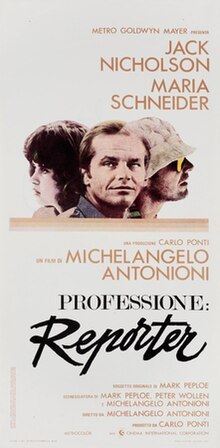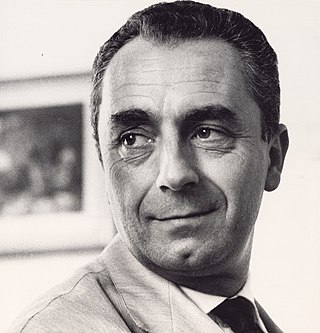
Michelangelo Antonioni was an Italian director and filmmaker. He is best known for his "trilogy on modernity and its discontents"—L'Avventura (1960), La Notte (1961), and L'Eclisse (1962)—as well as the English-language film Blowup (1966). His films have been described as "enigmatic and intricate mood pieces" that feature elusive plots, striking visual composition, and a preoccupation with modern landscapes. His work substantially influenced subsequent art cinema. Antonioni received numerous awards and nominations throughout his career, being the only director to have won the Palme d'Or, the Golden Lion, the Golden Bear and the Golden Leopard.

L'Avventura is a 1960 Italian drama film directed by Michelangelo Antonioni. Developed from a story by Antonioni with co-writers Elio Bartolini and Tonino Guerra, the film is about the disappearance of a young woman during a boating trip in the Mediterranean, and the subsequent search for her by her lover and her best friend. It was filmed on location in Rome, the Aeolian Islands, and Sicily in 1959 under difficult financial and physical conditions. The film is noted for its unusual pacing, which emphasizes visual composition, mood, and character over traditional narrative development.

Blow-Up is a 1966 psychological mystery film directed by Michelangelo Antonioni, co-written by Antonioni and Tonino Guerra and produced by Carlo Ponti. It is Antonioni's first entirely English-language film and stars David Hemmings, Vanessa Redgrave and Sarah Miles. Also featured was 1960s model Veruschka. The plot was inspired by Argentine writer Julio Cortázar's 1959 short story "Las babas del diablo".
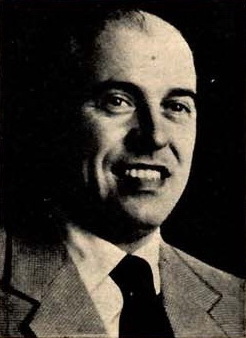
Carlo Fortunato Pietro Ponti Sr.OMRI was an Italian film producer with more than 140 productions to his credit. Along with Dino De Laurentiis, he is credited with reinvigorating and popularizing Italian cinema post-World War II, producing some of the country's most acclaimed and financially-successful films of the 1950s and 1960s.
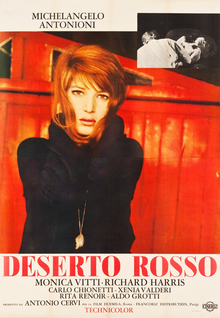
Red Desert is a 1964 Italian drama film directed by Michelangelo Antonioni and starring Monica Vitti and Richard Harris. Written by Antonioni and Tonino Guerra, it was Antonioni's first color film. Set in Northern Italy, the story follows a troubled woman who is unable to adapt to her environment after an automobile accident.

Zabriskie Point is a 1970 American drama film directed by Michelangelo Antonioni and starring Mark Frechette, Daria Halprin, and Rod Taylor. It was widely noted at the time for its setting in the counterculture of the United States. Some of the film's scenes were shot on location at Zabriskie Point in Death Valley.

Monica Vitti was an Italian actress who starred in several award-winning films directed by Michelangelo Antonioni during the 1960s. She appeared with Marcello Mastroianni, Alain Delon, Richard Harris, Terence Stamp, and Dirk Bogarde. On her death, Italian culture minister Dario Franceschini called her "the Queen of Italian cinema".

Osuna is a town and municipality in the province of Seville, southern Spain, in the autonomous community of Andalusia. As of 2009, it has a population of c. 17,800. It is the location of the Andalusian Social Economy School.

Eros is a 2004 anthology film consisting of three short segments: The Hand directed by Wong Kar-wai in Mandarin, Equilibrium by Steven Soderbergh in English, and The Dangerous Thread of Things by Michelangelo Antonioni in Italian. Each segment addresses the themes of love and sex.

Mark Frechette was an American-Canadian film actor. He is best known for playing the lead role in the 1970 film Zabriskie Point, directed by Michelangelo Antonioni, in which he was cast despite his lack of acting experience. Frechette appeared in two other Italian films. He also became an active member of Mel Lyman's commune. Three years later, Frechette was arrested following an attempted bank robbery; he died in prison two years after his arrest.

L'Eclisse is a 1962 Italian romance film written and directed by Michelangelo Antonioni and starring Alain Delon and Monica Vitti. Filmed on location in Rome and Verona, the story follows a young woman (Vitti) who pursues an affair with a confident young stockbroker (Delon). Antonioni attributed some of his inspiration for L'Eclisse to when he filmed a solar eclipse in Florence. The film is considered the last part of a trilogy and is preceded by L'Avventura (1960) and La Notte (1961).

Love in the City is a 1953 Italian anthology film composed of six segments, each with its own director. The segments and filmmakers are: Paid Love, Attempted Suicide, Paradise for Three Hours, Marriage Agency, Story of Caterina, and Italians Stare.

La Notte is a 1961 Italian drama film directed by Michelangelo Antonioni and starring Marcello Mastroianni, Jeanne Moreau and Monica Vitti. Filmed on location in Milan, the film depicts a single day and night in the lives of a disillusioned novelist (Mastroianni) and his alienated wife (Moreau) as they move through various social circles. The film continues Antonioni's tradition of abandoning traditional storytelling in favor of visual composition, atmosphere, and mood.

Il grido is a 1957 Italian drama film directed by Michelangelo Antonioni and starring Steve Cochran, Alida Valli, and Betsy Blair. It received the Golden Leopard at the 1957 Locarno Film Festival. In 2008, the film was included on the Italian Ministry of Cultural Heritage’s 100 Italian films to be saved, a list of 100 films that "have changed the collective memory of the country between 1942 and 1978."
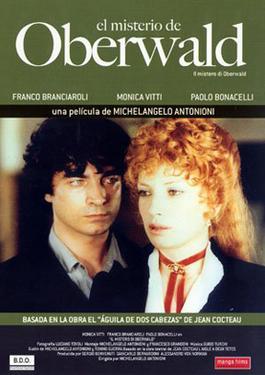
The Mystery of Oberwald is a 1980 Italian–German television drama film directed by Michelangelo Antonioni and starring Monica Vitti, Paolo Bonacelli, and Franco Branciaroli. It is based on the 1946 play L'Aigle à deux têtes by Jean Cocteau.

Beyond the Clouds is a 1995 Italian-French-German romance film directed by Michelangelo Antonioni, with contributions by Wim Wenders, and starring John Malkovich, Sophie Marceau, Vincent Perez, Irène Jacob, Fanny Ardant, Jeanne Moreau, Peter Weller, Marcello Mastrioanni, and Jean Reno. The film consists of four stories of romantic love and illusion told from the perspective of a wandering film director. In the first story, two beautiful young lovers are unable to consummate their passion because the young man desires impossible perfection. In the second story, the director makes love to a young woman who reveals that she murdered her father. In the third story, a man makes an effort to appease both his wife and his mistress. In the fourth story, a young man is infatuated with a girl who is about to enter a convent. This was the final feature-length film by Antonioni before his death in 2007.
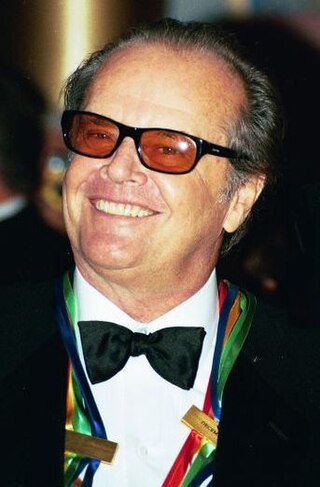
John Joseph Nicholson is a retired American actor and filmmaker. Nicholson is widely regarded as one of the greatest actors of the 20th century. Throughout his five-decade career he received numerous accolades, including three Academy Awards, three BAFTA Film Awards, six Golden Globe Awards, and a Grammy Award. He also received the American Film Institute's Life Achievement Award in 1994 and the Kennedy Center Honor in 2001. In many of his films, he played rebels against the social structure.
Enrica Antonioni is an Italian film director and actress, the widow of Michelangelo Antonioni.
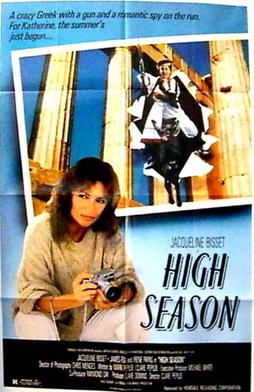
High Season is a 1987 British romantic comedy film directed by Clare Peploe. It is a comedy about tourism, set on the Greek island of Rhodes; vacationers from rich countries taking over the most spectacular scenery at the most desirable times of the year. There are nine principal characters, a mixture of English, Greek, and a Greek-American. It was written by director Clare Peploe with her brother Mark.
Clare Peploe was a British-Italian screenwriter, producer, and film director.
